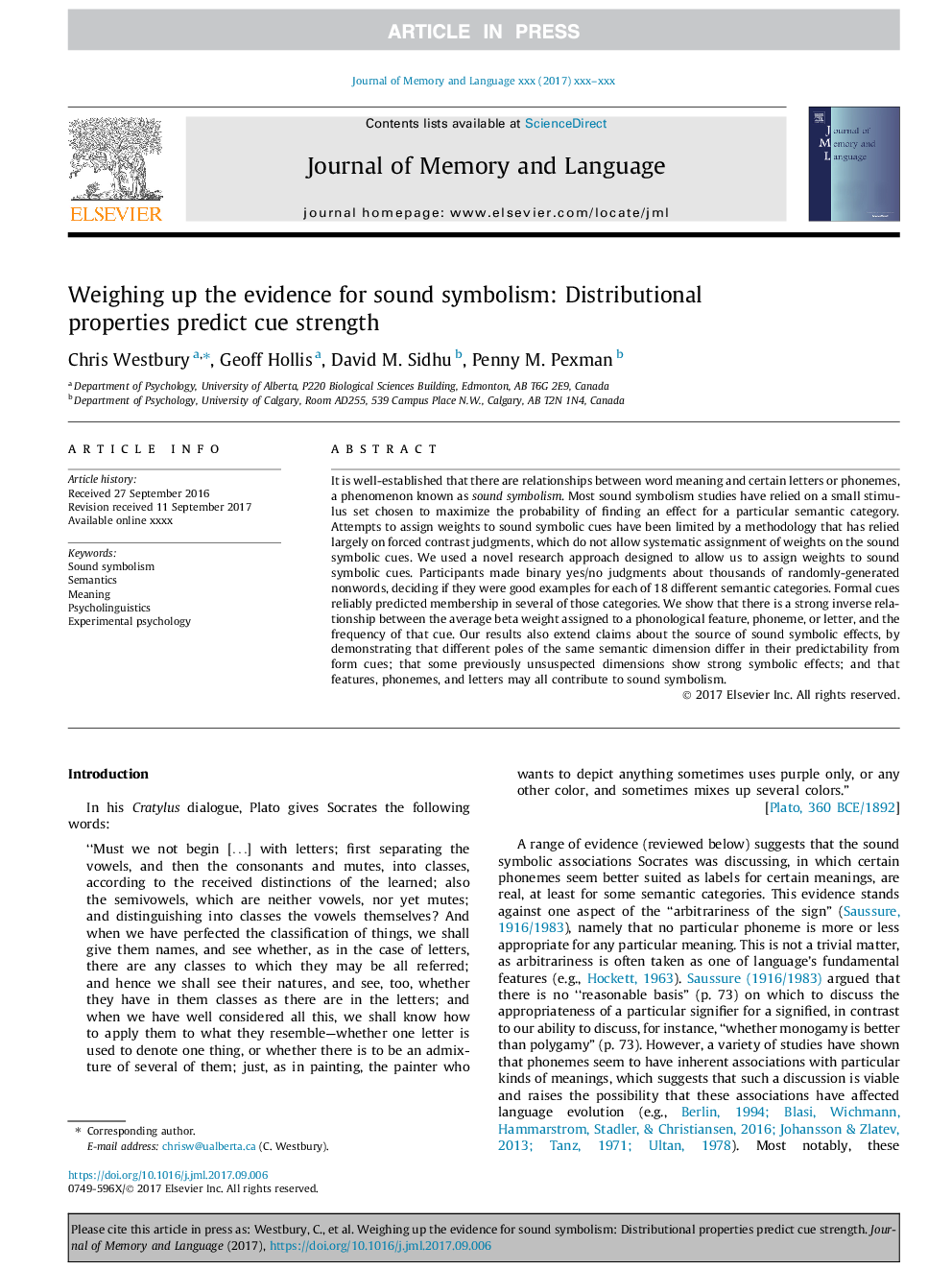| Article ID | Journal | Published Year | Pages | File Type |
|---|---|---|---|---|
| 7296853 | Journal of Memory and Language | 2018 | 29 Pages |
Abstract
It is well-established that there are relationships between word meaning and certain letters or phonemes, a phenomenon known as sound symbolism. Most sound symbolism studies have relied on a small stimulus set chosen to maximize the probability of finding an effect for a particular semantic category. Attempts to assign weights to sound symbolic cues have been limited by a methodology that has relied largely on forced contrast judgments, which do not allow systematic assignment of weights on the sound symbolic cues. We used a novel research approach designed to allow us to assign weights to sound symbolic cues. Participants made binary yes/no judgments about thousands of randomly-generated nonwords, deciding if they were good examples for each of 18 different semantic categories. Formal cues reliably predicted membership in several of those categories. We show that there is a strong inverse relationship between the average beta weight assigned to a phonological feature, phoneme, or letter, and the frequency of that cue. Our results also extend claims about the source of sound symbolic effects, by demonstrating that different poles of the same semantic dimension differ in their predictability from form cues; that some previously unsuspected dimensions show strong symbolic effects; and that features, phonemes, and letters may all contribute to sound symbolism.
Related Topics
Life Sciences
Neuroscience
Cognitive Neuroscience
Authors
Chris Westbury, Geoff Hollis, David M. Sidhu, Penny M. Pexman,
